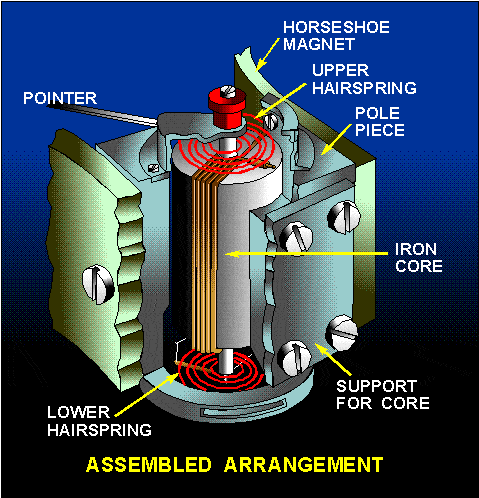Dynamometer Type Instruments Pdf

On this page you can find an overview of our dynamometer for the measurement of tension. 2380 987 035 for PCE Instruments UK info@pce. Type: Weighing Range. CLASS NOTES ON ELECTRICAL MEASUREMENTS & INSTRUMENTATION 2015 1. Why is dynamometer type instrument. Why an electrodynamometer type instrument is called. 3700 Sagamore Parkway North. Lafayette, IN 47903 USA. Ph: 765-423-1505 Lafayette Instrument Hand Dynamometer 2 System Description 3.
This page is all about • • • • • A dynamometer is a device used for measuring the torque and brake power required to operate a driven machine. Dynamometers can be broadly classified into two types. They are: • Power Absorption Dynamometers: Power Absorption dynamometers measure and absorb the power output of the engine to which they are coupled. The power absorbed is usually dissipated as heat by some means. Examples of power absorption dynamometers are,,,, etc. • Power Transmission Dynamometers: In power transmission dynamometers the power is transmitted to the load coupled to the engine after it is indicated on some scale.
These are also called torque meters. Some of the different types of dynamometers are discussed below in brief. Prony Brake Dynamometer: Pony Brake is one of the simplest dynamometers for measuring power output (brake power). It is to attempt to stop the engine using a brake on the flywheel and measure the weight which an arm attached to the brake will support, as it tries to rotate with the flywheel. Figure 1: Prony Brake The Prony brake shown in the above consists of a wooden block, frame, rope, brake shoes and flywheel. It works on the principle of converting power into heat by dry friction.
Spring-loaded bolts are provided to increase the friction by tightening the wooden block. The whole of the power absorbed is converted into heat and hence this type of dynamometer must the cooled. The brake power is given by the formula Brake Power (bp) = 2 π NT Where T = Weight applied (W) × distance (l) Rope Brake Dynamometer: The rope brake as shown in below figure is another device for measuring brake power of an engine. It consists of some turns of rope wound around the rotating drum attached to the output shaft. One side of the rope is connected to a spring balance and the other side to a loading device. The power is absorbed in friction between the rope and the drum. Therefore drum in rope brake requires cooling.
Figure 2: Rope Brake Rope brake dynamometers are cheap and can be constructed quickly but brake power can’t be measured accurately because of change in the of the rope with a change in temperature. The brake power is given by the formula Brake Power (bp) = π DN (W − S) where D is the brake drum diameter, W is the weight of the load and S is the spring balance reading.
Eddy Current Dynamometer: The working principle of eddy current dynamometer is shown in the figure below. It consists of a stator on which are fitted some electromagnets and a rotor disc made of copper or steel and coupled to the output shaft of the engine.
When the rotor rotates, eddy currents are produced in the stator due to magnetic flux set up by the passage of field current in the electromagnets. Ballerina 2017 Online Cinema here. These eddy currents are dissipated in producing heat so that this type of dynamometer requires some cooling arrangement. The torque is measured exactly as in other types of absorption dynamometers, i.e., with the help of a moment arm. The load in testing is controlled by regulating the current in the electromagnets.
Figure 3: Eddy Current Dynamometer The following are the main advantages of eddy current dynamometers: • High brake power per unit weight of dynamometer. • They offer the highest ratio of constant power speed range (up to 5: 1). • Level of field excitation is below 1% of total power being handled by the dynamometer. Thus, they are easy to control and operate. • Development of eddy current is smooth hence the torque is also smooth and continuous under all conditions. • Relatively higher torque under low-speed conditions.
• It has no intricate rotating parts except shaft bearing. • No natural limit to size, either small or large. Import Xls File To Postgresql. Hydraulic Dynamometer: A hydraulic dynamometer as shown in the figure below works on the principle of dissipating the power in fluid friction rather than in dry friction. Figure 4: Hydraulic Dynamometer • In principle, hydraulic dynamometer construction is similar to that of a fluid flywheel. • Hydraulic dynamometer consists of an impeller or inner rotating member coupled to the output shaft of the engine. • The impeller in this dynamometer rotates in a casing filled with a fluid.
Microsoft Dynamics Nav 2009 Odbc Driver more. • Due to the centrifugal force developed in the outer casing, tends to revolve with the impeller, but is resisted by a torque arm supporting the balance weight. • The frictional forces generated between the impeller and the fluid are measured by the spring balance fitted on the casing. • The heat developed due to the dissipation of power in Hydraulic dynamometer is carried away by a continuous supply of the working fluid.